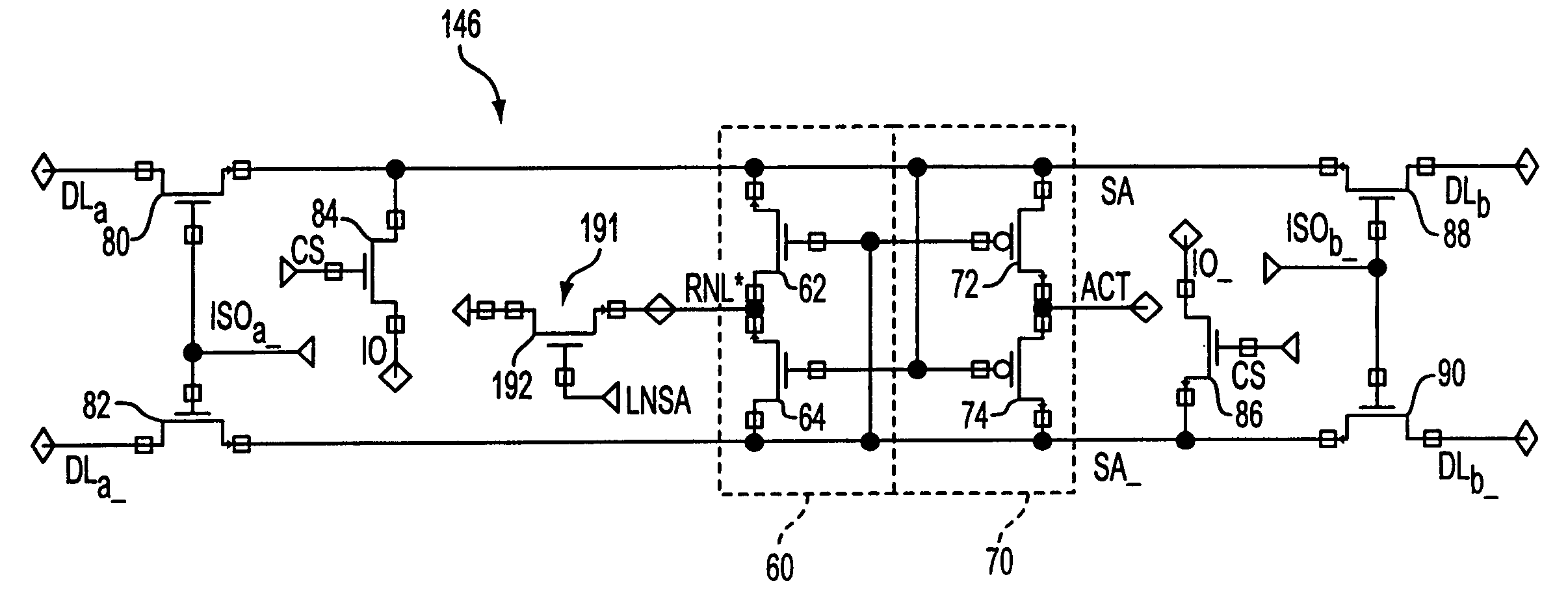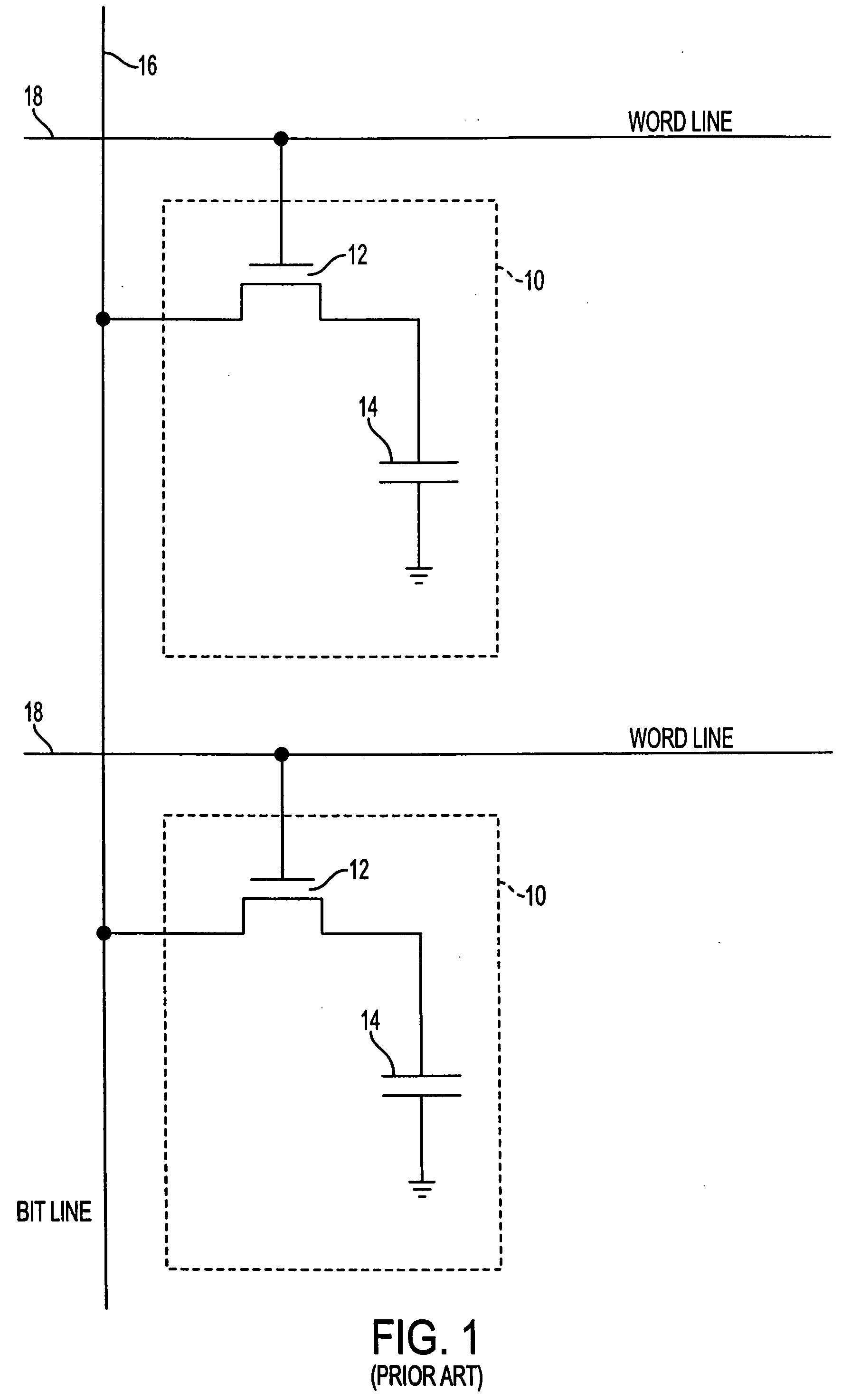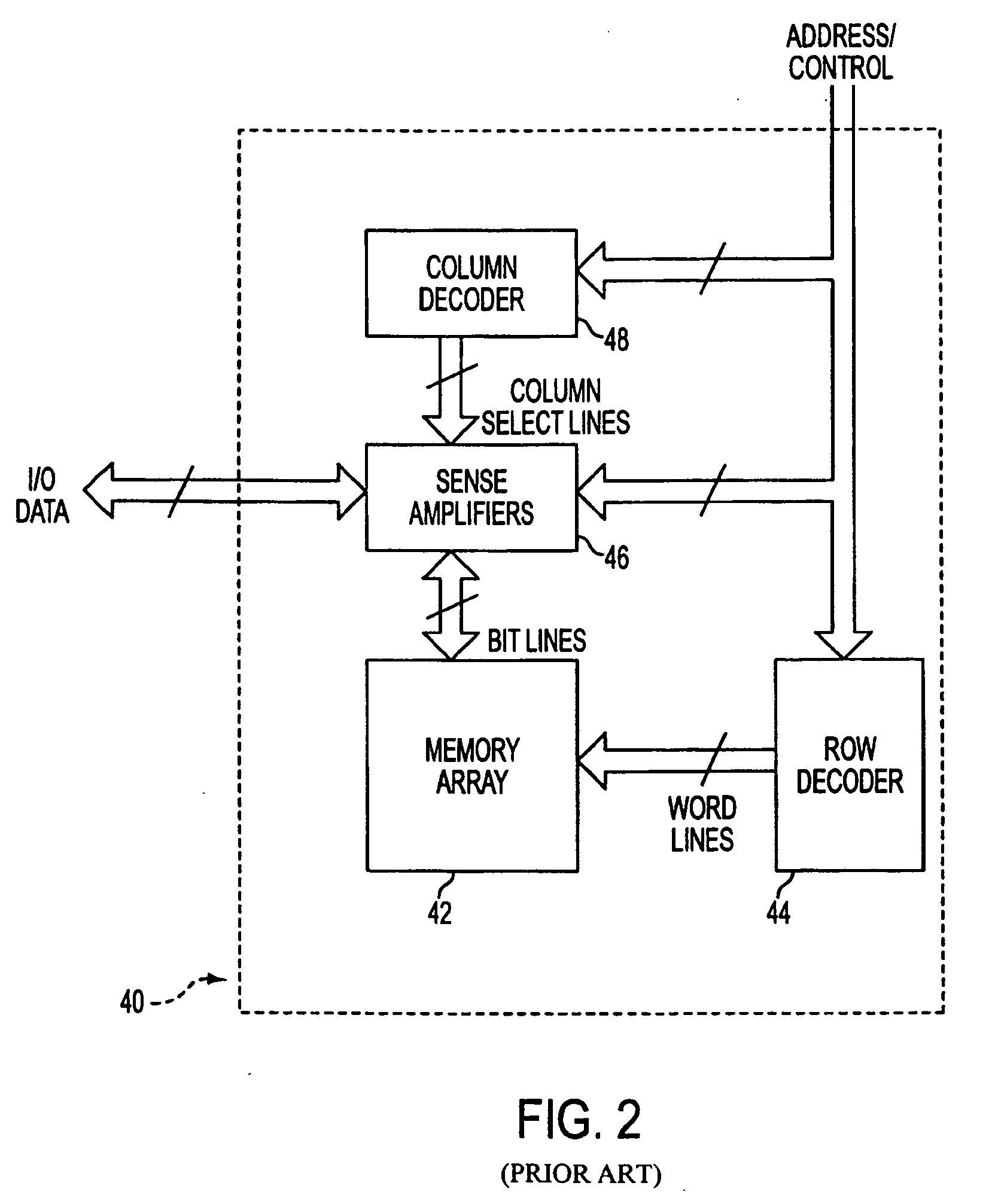Physically alternating sense amplifier activation
a sense amplifier and physical alternating technology, applied in the field of physical alternating sense amplifier activation scheme, can solve the problems of large waste of space, large rc delay, large bus size, etc., to improve the operation of the device's sense amplifier, reduce the size of the bus, and free up the effect of space in the devi
- Summary
- Abstract
- Description
- Claims
- Application Information
AI Technical Summary
Benefits of technology
Problems solved by technology
Method used
Image
Examples
Embodiment Construction
[0035] In the following detailed description, reference is made to various specific embodiments in which the invention may be practiced. These embodiments are described with sufficient detail to enable those skilled in the art to practice the invention, and it is to be understood that other embodiments may be employed, and that structural and electrical changes may be made without departing from the spirit or scope of the present invention.
[0036] As set forth above, there is a desire and need to implement adequately sized ACT and RNL* drivers in a DRAM device. Proper sizing of these drivers will improve sense amplifier operation and operation of the DRAM device itself. It is also desirable to implement these drivers without wasting precious space in the device.
[0037] One possible solution is to embed both the ACT and RNL* drivers into each sense amplifier of the banks of sense amplifiers. Although it would be possible to obtain larger drivers, this scheme would take up an enormous...
PUM
 Login to View More
Login to View More Abstract
Description
Claims
Application Information
 Login to View More
Login to View More - R&D
- Intellectual Property
- Life Sciences
- Materials
- Tech Scout
- Unparalleled Data Quality
- Higher Quality Content
- 60% Fewer Hallucinations
Browse by: Latest US Patents, China's latest patents, Technical Efficacy Thesaurus, Application Domain, Technology Topic, Popular Technical Reports.
© 2025 PatSnap. All rights reserved.Legal|Privacy policy|Modern Slavery Act Transparency Statement|Sitemap|About US| Contact US: help@patsnap.com



